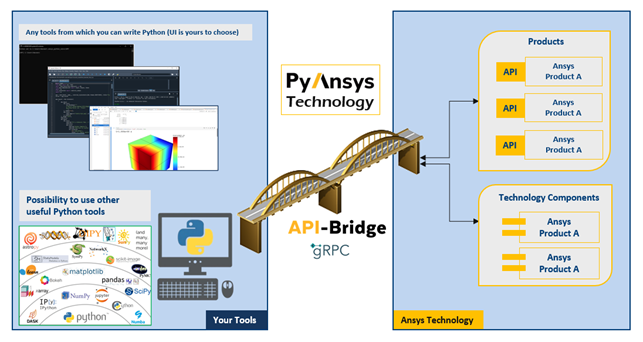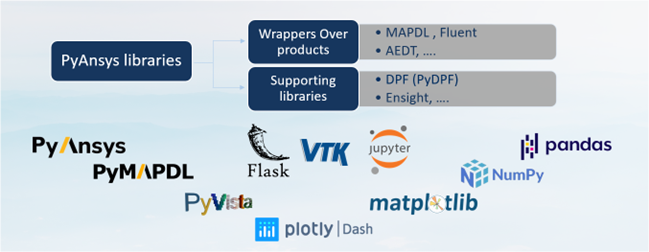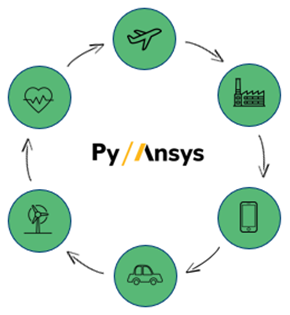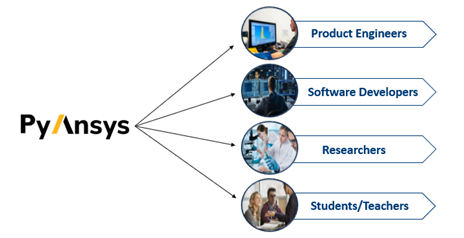

Before we dive into using the Ansys Python Manager, it’s helpful to understand the backend architecture that powers the PyAnsys ecosystem. Gaining insight into how this technology works behind the scenes will provide valuable context for how the tools interact, communicate, and deliver powerful simulation capabilities through Python.
In today’s fast-paced engineering and simulation landscape, automating, customizing, and scaling workflows is crucial. Integrating Python with Ansys – powered by gRPC and the PyAnsys ecosystem – combines flexibility and advanced simulation to streamline processes, enable cross-platform communication, and create specialized applications. From automating design variations to generating AI-ready datasets, PyAnsys delivers a powerful toolkit for efficient, scalable engineering solutions.


In collaborating with users across various industries, I’ve encountered a wide range of applications for PyAnsys. These include automating entire workflows for design variations, generating large datasets for machine learning, developing custom post-processing routines, and building specialized vertical applications – such as those tailored for the healthcare sector.

Automating repetitive tasks, such as parameter studies, optimization, and reporting, is a breeze with PyAnsys. Python scripts help reduce manual effort, saving both time and resources while enhancing overall productivity.
PyAnsys allows users to design custom workflows tailored to their specific simulation needs. Whether you’re running simulations or processing results, you can structure your workflow to suit the problem at hand.
PyAnsys integrates with Python’s rich ecosystem of libraries—such as NumPy, Pandas, and Matplotlib—to enhance your data processing, analysis, and visualization capabilities.
Whether you’re running simulations on local machines, leveraging high-performance computing (HPC) clusters, or scaling up to cloud platforms, PyAnsys allows for seamless scalability, making it perfect for handling large, complex problems.

Automate finite element analyses (FEA), perform parameterized models, and run design optimizations to improve structures’ performance.
Use PyAnsys for computational fluid dynamics (CFD), running parametric studies on fluid flows and visualizing results programmatically for better decision-making.
Optimize the design of antennas, PCB layouts, and RF systems with PyAnsys support for electromagnetic simulations.
Integrate material databases into your workflows to perform advanced material selection, ideal for simulations requiring precise material properties.
Note: All the Modules are available in the PyAnsys documentation at PyAnsys
Integrating Python with Ansys via gRPC and the PyAnsys ecosystem represents a major leap forward in engineering simulation workflows. This integration leverages Python’s versatility alongside Ansys’s robust simulation power, enabling seamless automation, tailored customization, and scalable solutions to address the demands of today’s rapid engineering landscape.
If you missed the previous post in this series, please check out An Introduction to PyAnsys: Revolutionizing Engineering Simulations.
In the upcoming blog, we will explore Ansys Python Manager – what it is, its purpose, and how it simplifies working with Ansys using Python. Stay tuned!
We’re here to help you!
Contact us: